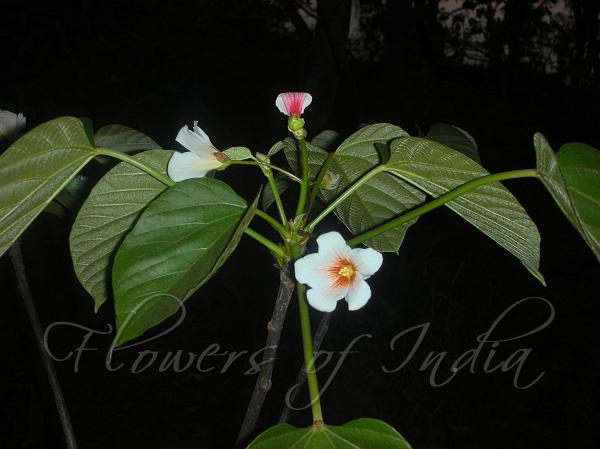|
| Tung Tree |
|

|

| File size | 283439 |
| Original date | 2/12/06 2:20 AM |
| Resolution | 2048 x 1536 |
| Flash | Flash fired |
| Focal length | 10.1mm |
| Exposure time | 1/120s |
| Aperture | 4.0 |
| Focus Distance | |
| Metering Mode | Multi-segment |
| Camera make | NIKON |
| Camera model | COOLPIX S6 |
| Sensor type |
|
|
|
|
Photo: |
Botanical name: Vernicia fordii Family: Euphorbiaceae (Castor family)
Synonyms: Aleurites fordii
Synonyms: Aleurites fordii
Tung Tree is a small to medium-sized deciduous tree
growing up to 20 m tall, with a spreading crown. The bark is smooth and
thin, and bleeds latex if cut. The leaves are alternate, simple, 4.5-25
cm long and 3.5-22 cm broad, heart-shaped or occasionally with three
shallow, maple-like lobes, green above and below, red conspicuous
glands at the base of the leaf, and with a 5.5-26 cm long stalk. The
flowers are 2.5-3.5 cm diameter, with five pale pink to purple petals
with streaks of darker red or purple in the throat. The tree is
monoecious with individual flowers either male or female, but produced
together in the inflorescences. The flowers appear before or with the
leaves in loose, terminal clusters. The fruit is a hard, woody
pear-shaped drupe 4-6 cm long and 3-5 cm diameter, containing four or
five large, oily seeds; it is green initially, becoming dull brown when
ripe in autumn. Tung Tree is native to southern China, Burma, and
northern Vietnam. The tree is valued for tung oil, which is derived
from the seeds of the tree. Tung oil, also called China wood oil or nut
oil, has traditionally been used in lamps in China. In modern times, it
is used as an ingredient in paint, varnish, and caulk.
| Identification credit: Krishan Lal | Photographed in Sirmaur Distt, Himachal Pradesh. |
• Is this flower misidentified? If yes,